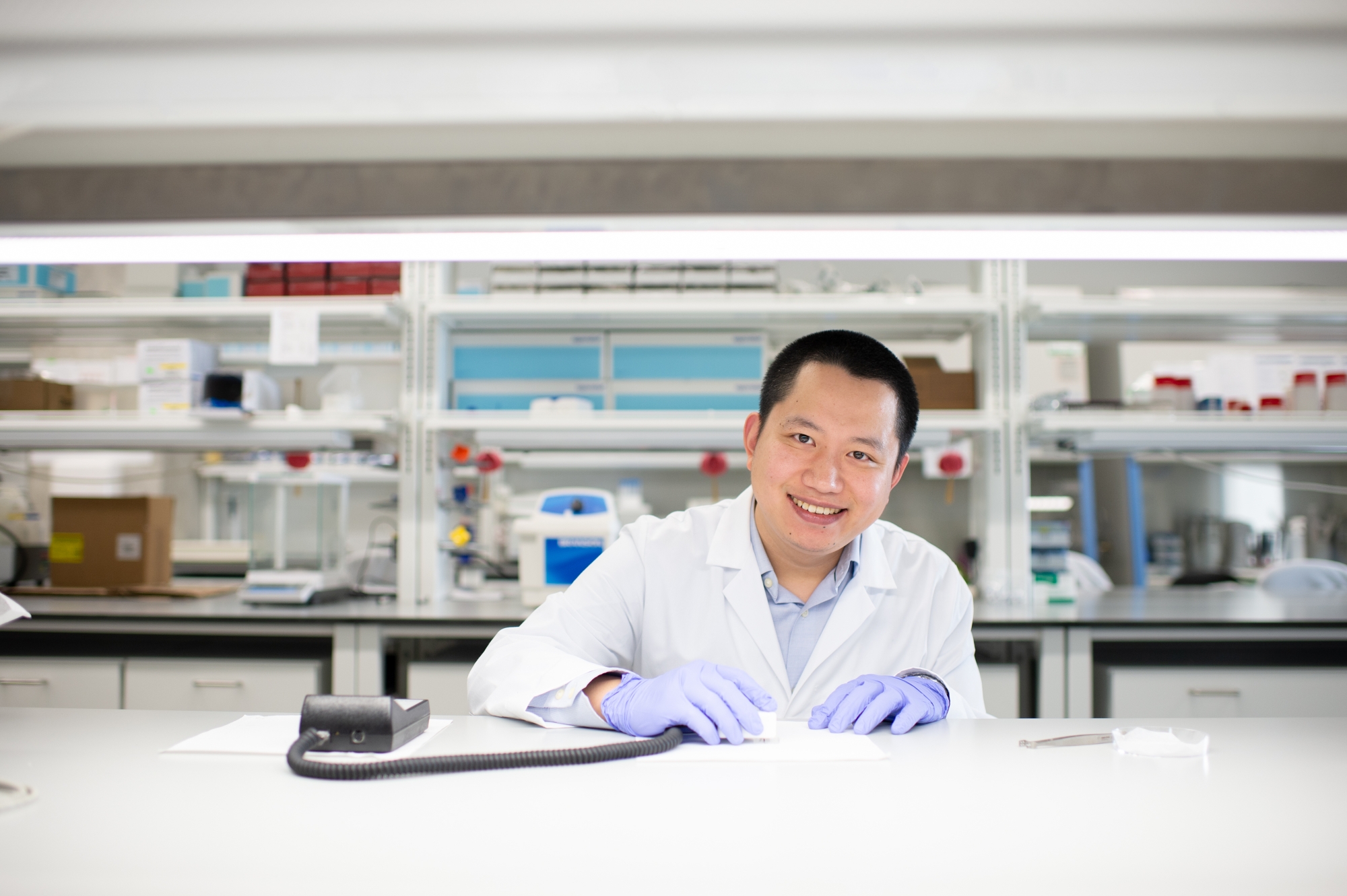A Shining Light

Engineers have contributed to great advances in the neuroscience field over the past several decades by using electrical tools to help understand how neurons work and how the brain functions. But even very successful approaches have their limitations, so new approaches may provide new opportunities to dig deeper and learn more.
Dr. Luyao Lu thinks so. He’s intrigued by the possibilities of optogenetics, which use light to control cells—particularly neurons—in living tissue to better study their functions. He specializes in creating bioelectronic devices that use light to study and measure cell functions.
“The ultimate goal is to provide better tools to understand how the brain functions and provide treatment for neurological diseases like Parkinson’s,” says Dr. Lu.
To accomplish this, he’s trying to create bioelectronic devices that use two types of sensors. The first sensor uses light emitting diodes that stimulate and deliver light to the cells he is interested in studying, and the second sensor uses light sensing devices to record the optical signals from the cells of the biological tissues to see whether they are active in a particular brain function. While traditional electrical stimulation and recording tools record activity in the area of the brain being studied, they lack the specific cell resolution that optical tools provide. With optical tools, researchers can go deeper and tell whether particular subgroups of neurons are active in the brain function being studied.
Other researchers are also developing bioelectronic tools to study optogenetics, but Dr. Lu uses wireless electronics for his, which sets him apart from most of his peers, who use wired optical fibers and deliver the light through the fiber to the living tissues and to the camera or recording hardware.
“Using a wired connection is not ideal for animal studies. We integrate the light emitting diodes and light sensing devices and use wireless electronics to operate the devices and transmit the signals to the recording hardware, and these will enable us to study animals in a more freely moving manner and to generate fewer defects in the recorded signals,” he explains.
As a post-doctoral fellow at the Center for Bio-Integrated Electronics at Northwestern University, Dr. Lu and his team developed the world’s first miniaturized wireless optical recording device, and he plans to design more advanced bioelectronic systems at GW.
“The current state-of-the-art wireless platform allows us to do optical stimulation or optical recording but we can’t do them simultaneously. That’s our short term goal at GW, to fabricate and test these platforms,” he notes.

